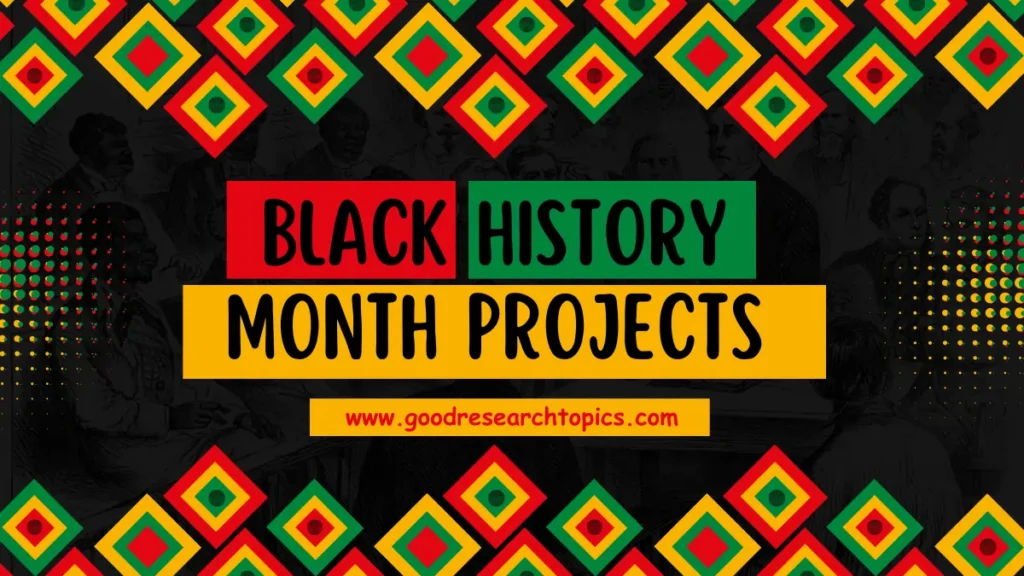Looking for the best black history month project ideas for middle school? Black History Month is an important time to learn about and honor the contributions that African Americans have made to our country’s history. For middle school students, coming up with creative Black History Month school project ideas is a great way to explore this rich culture and heritage. Useful classroom activities and projects will teach students about important people, events, stories, and achievements in Black communities that often do not get enough attention within typical American history lessons.
Students can gain valuable perspectives by crafting unique art projects, performances, research reports, timelines, and more around Black History Month themes. The interactive, hands-on nature of DIY projects, crafts, building models, cooking traditional recipes, and similar activities engage middle school-aged students in fun and memorable ways. With guidance from teachers, parents, and project guidelines, students can find exciting ideas matching their skills and interests that educate them on Black scientists, civil rights leaders, inventors, authors, and explorers who broke barriers.
The key is crafting age-appropriate Black History Month school projects that unlock history for middle schoolers in hands-on, eye-opening, and empowering ways. The following ideas and examples highlight a range of ways to do this effectively.
You May Like To Read: Informative Research Paper Topics
What Is Black History Month?
Black History Month is an annual celebration held every February in the United States, Canada, and the United Kingdom to honor and promote the achievements of African Americans throughout history.
Originally started in 1926 by Carter G. Woodson, a Black historian, it was known as “Negro History Week” and took place in the second week of February. It later expanded to become Black History Month in 1976. February was chosen because it coincided with the birthdays of abolitionist Frederick Douglass and President Abraham Lincoln.
The goal of Black History Month is to highlight and pay tribute to the impressive accomplishments of the Black community that are often overlooked or undervalued in relation to American history overall. It is a time to focus on and appreciate the vital role that Black people and culture have played in shaping science, politics, law, sports, music, fashion, literature, and every area of society.
How To Select Right Black History Month Project Ideas For Middle School?
Here is a guide on how to select the right Black History Month project ideas for middle school students:
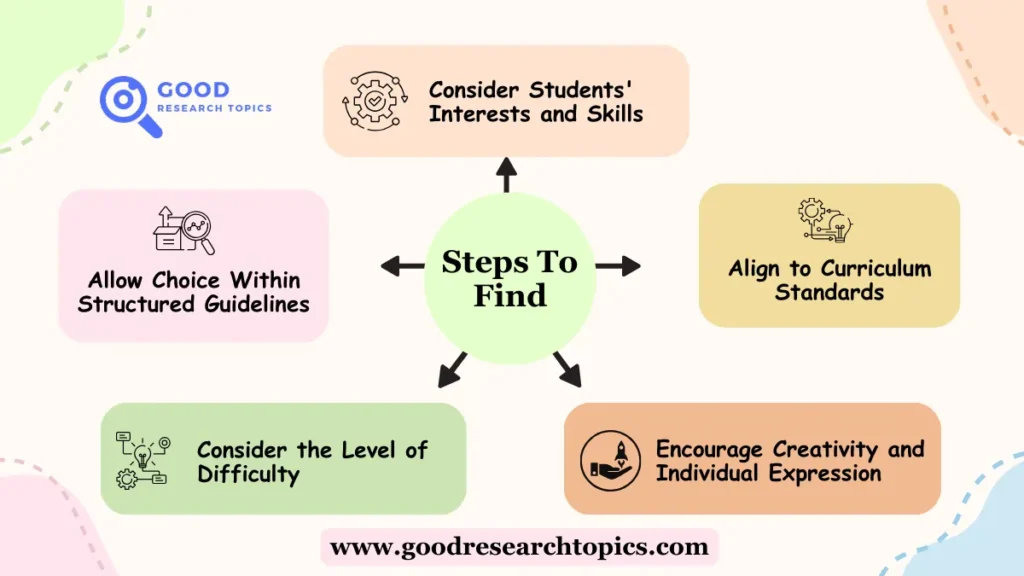
1. Consider Students’ Interests and Skills
- Get student input and feedback on types of projects they would enjoy
- Gauge interests – arts & crafts, acting & performance, cooking & food, sports, etc.
- Assess skill levels – writing, drawing, singing, building, research abilities, etc.
- Match projects to each student’s interests and skills for engagement
2. Align to Curriculum Standards
- Consult national/state curriculum standards for social studies, arts, and literature
- Choose projects that address key learning objectives around cultural literacy, research capabilities, presentation skills
3. Encourage Creativity and Individual Expression
- Allow flexibility for students to connect personally with project topics
- Enable students to showcase their unique talents through different mediums like art, technology, writing
- This makes the learning and sharing process more meaningful to them
4. Consider the Level of Difficulty
- Assess scope and workload for age appropriateness
- Ensure students can reasonably complete projects within given timeframes and resources
- Offer guidance for research, techniques, and tools to help them bring complex ideas to life
5. Allow Choice Within Structured Guidelines
- Provide a list of pre-approved Black history topics and project formats students can choose from
- Set clear project requirements and objectives upfront
- Maintain flexibility for personalized projects within defined boundaries
List of 27+ Good Black History Month Project Ideas For Middle School Students
Here are the most interesting black history month project ideas for middle school students:
1. Interactive Timeline – Good Black History Month Research Project
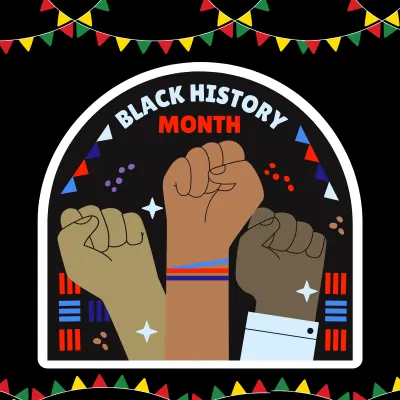
- Creating an interactive digital timeline provides an immersive way for students to explore Black history. Utilize online tools or apps to incorporate multimedia elements such as videos, images, and audio clips. Each entry on the timeline should not only include the date and event but also contextual information, significance, and personal reflections.
2. Interesting Biography Scrapbook Black History Month Project Ideas For Middle School Students

- Encourage students to go beyond surface-level facts in their biography scrapbooks. In addition to photos and basic biographical information, ask them to include personal reflections on how each figure’s contributions impacted society. This project allows for a deeper understanding of the individuals behind the historical narratives.
3. 3D Model of an Iconic Landmark
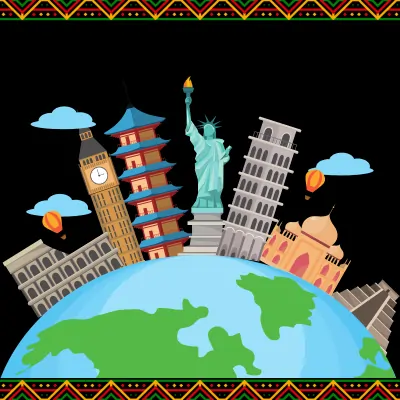
- Building a three-dimensional model provides an opportunity for tactile learning. For example, if students choose the Martin Luther King Jr. Memorial, they can explore the symbolism behind the design, understand the significance of its location, and consider the emotions it evokes. The process of constructing the model enhances spatial reasoning and creativity.
4. Hip-Hop History Lesson

- Hip-hop is a cultural phenomenon that extends beyond music, encompassing art, dance, and social commentary. Students can explore its roots in African American communities, its evolution over time, and its impact on mainstream culture. This project may include presentations, dance performances, and discussions on the role of hip-hop in expressing social and political realities.
5. Civil Rights Movement Newspaper
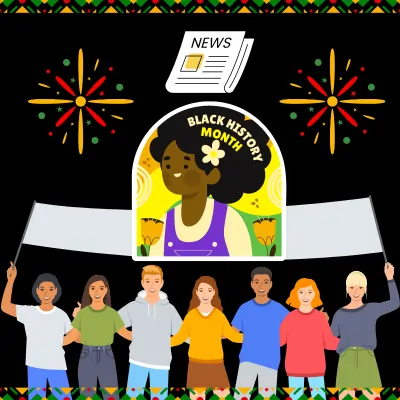
- Designing a newspaper allows students to engage with primary sources and historical events. They can create articles as if reporting in real-time, including interviews with individuals who lived through the Civil Rights Movement. This project enhances research skills, journalistic writing, and an understanding of the media’s role in shaping public opinion.
6. Podcast Series
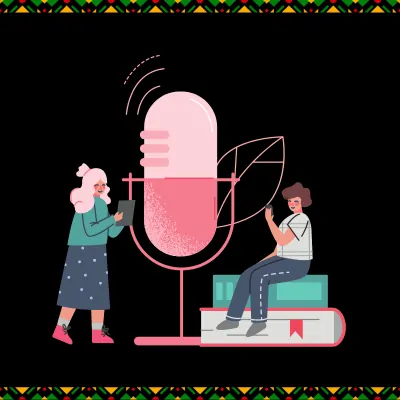
- Producing a podcast series gives students the chance to develop research, scripting, and public speaking skills. Each episode can focus on a different aspect of Black history, featuring interviews with experts, eyewitness accounts, or dramatizations of historical events. This project promotes creativity, storytelling, and effective communication.
7. Virtual Museum Tour
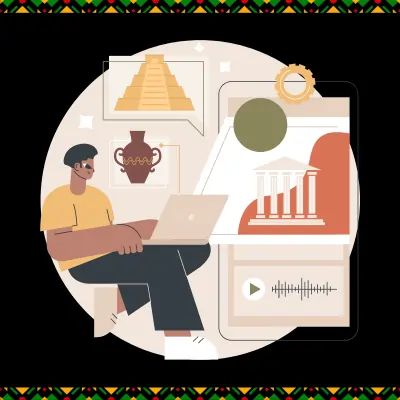
- Creating a virtual museum tour involves thorough research and curation skills. Students can include audio explanations, 360-degree views of exhibits, and interactive elements. This project not only highlights their understanding of Black history but also introduces technology as a tool for education and storytelling.
8. Origins of Jazz Poster
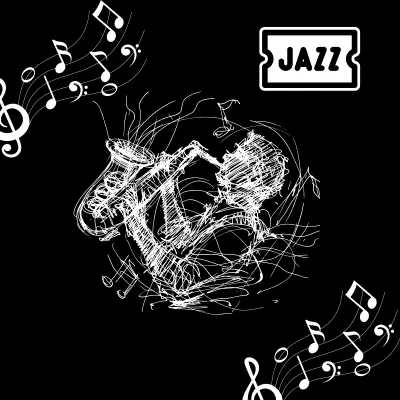
- Designing a poster on the origins of jazz provides an opportunity to explore the cultural roots and historical context of this musical genre. Students can include visual representations of key musicians, instruments, and geographic influences. The poster becomes a visual narrative that connects the evolution of jazz with broader themes in Black history.
9. African American Inventors Display

- Crafting a display showcasing inventions by Black inventors allows students to explore contributions often overlooked in traditional curricula. Each invention should be accompanied by a brief explanation of its impact on society, emphasizing the innovation and resilience of African American inventors throughout history.
10. Freedom Quilt
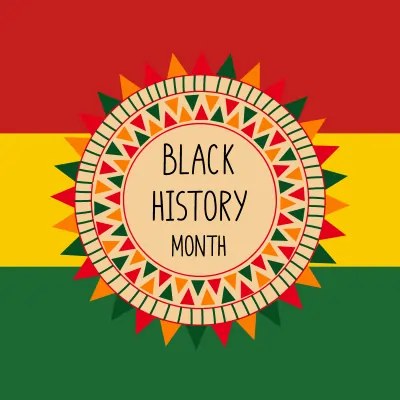
- The creation of a freedom quilt is a tactile and artistic expression of history. Students can design quilt squares that represent different aspects of the struggle for freedom, incorporating symbols, colors, and patterns with historical significance. The final quilt becomes a collaborative art piece reflecting the diversity and unity within the African American community.
11. Interactive Family Tree
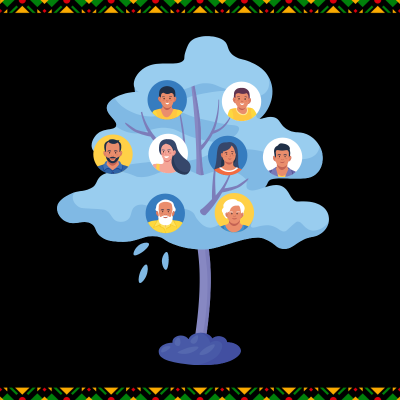
- Develop a digital interactive family tree not only tracing individual family histories but also exploring shared cultural roots and traditions. Include personal narratives, photos, and reflections.
12. Civil Rights Movement Virtual Reality Experience
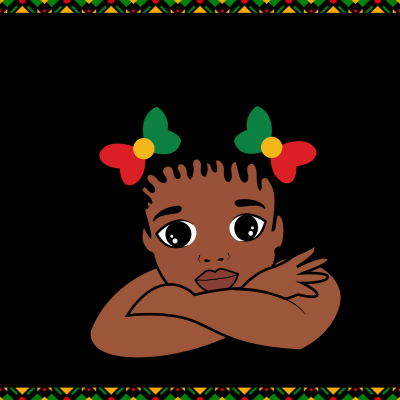
- Utilize virtual reality technology to create an immersive experience simulating key moments from the Civil Rights Movement. This project enhances technological skills while fostering empathy and understanding.
13. African American Art Exhibition – DIY Style

- Challenge students to create their own pieces of art inspired by African American artists. The exhibition can feature diverse mediums such as paintings, sculptures, or digital art, accompanied by explanations of their artistic choices.
14. Digital Storytelling Project
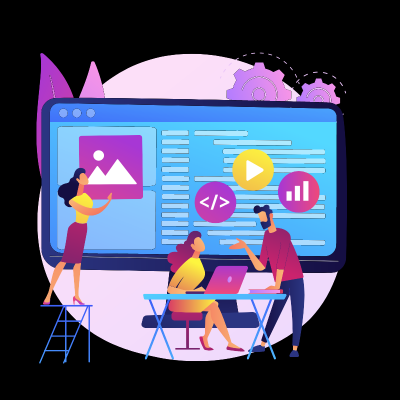
- Develop a digital storytelling project where students create short films, animations, or presentations highlighting personal narratives related to Black history, family stories, or local community impact.
15. Historical Board Game Design
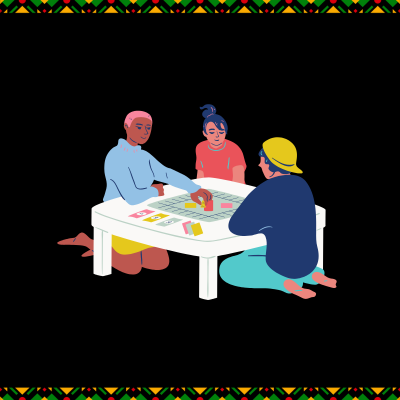
- Have students design and create their own board games centered around Black history. Include game elements that test knowledge, strategy, and critical thinking.
16. STEM Innovations by Black Women
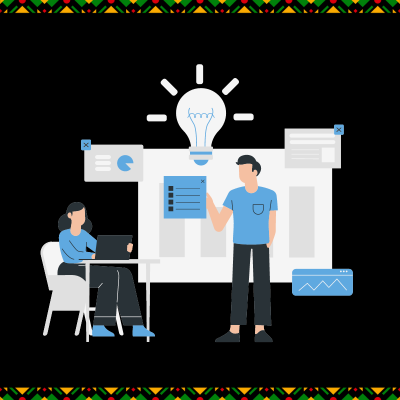
- Focus specifically on the contributions of Black women in STEM fields. Highlight figures like Katherine Johnson, Mae Jemison, or Shirley Ann Jackson and explore their groundbreaking work.
17. Civil Rights Movement Music Compilation
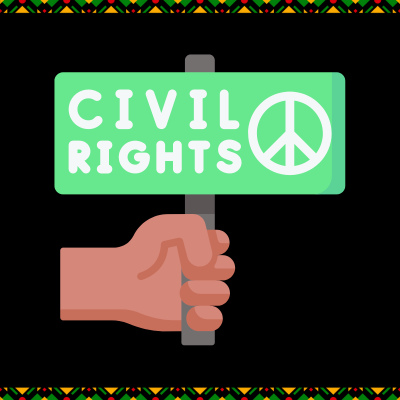
- Create a music compilation that traces the evolution of protest songs and music during the Civil Rights Movement. Discuss the power of music as a tool for social change.
18. African American Inventors Shark Tank
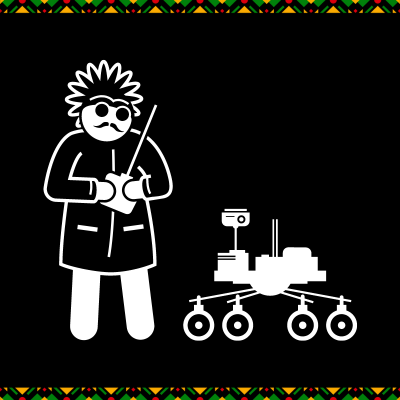
- Turn the classroom into a “Shark Tank” scenario where students pitch inventions by African American inventors. This project combines research, presentation skills, and creativity.
19. Living Museum
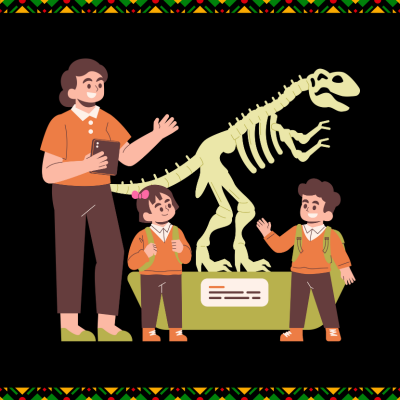
- Organize a living museum where students portray historical figures. Encourage them to embody the character, providing insights into the person’s life, achievements, and impact on history.
20. Digital Comic Strip Series
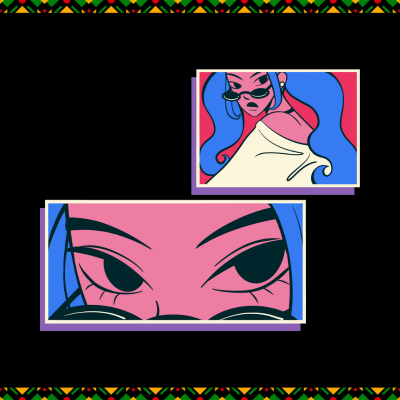
- Create a series of digital comic strips illustrating important events or stories from Black history. This project enhances visual storytelling skills and engages classmates in a unique way.
21. Artistic Expression Through Dance
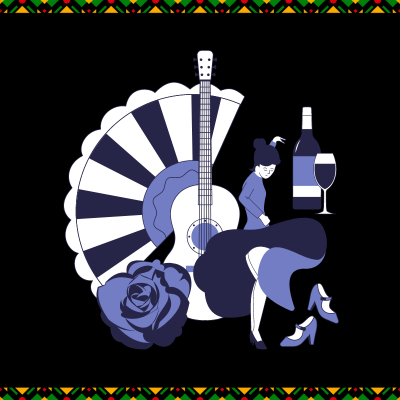
- Explore the rich history of African American dance styles, from traditional African dances to contemporary forms. Students can choreograph and perform dance routines that reflect the diversity within the community.
22. Digital Humanities Project – Oral History Podcast
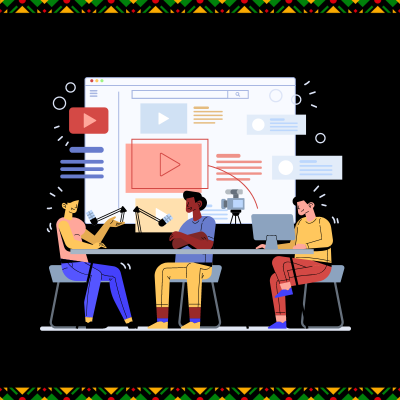
- Conduct and record interviews with community members, family, or local figures about their experiences related to Black history. Compile these stories into an oral history podcast series.
23. African American Culinary Journey
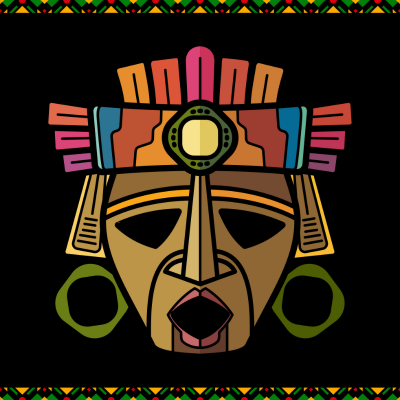
- Research and prepare a menu of dishes from different regions of the African diaspora. Create a culinary event where students showcase their dishes, accompanied by explanations of the historical and cultural significance.
24. Historical Fashion Through the Decades
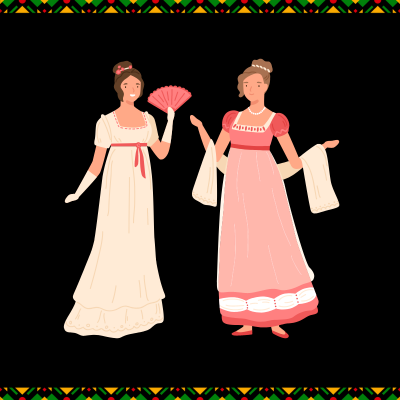
- Explore how fashion has evolved within the African American community over the decades. Students can create a fashion show or design visual displays representing different eras.
25. Community Art Installation
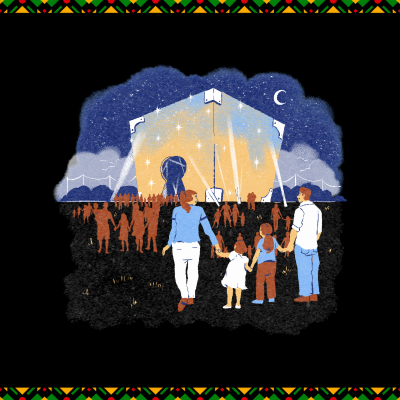
- Collaborate on a large-scale art installation within the school or local community. Use visual art to convey themes of unity, diversity, and resilience.
26. African Drumming Workshop
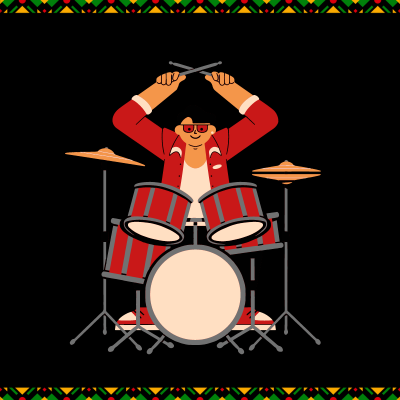
- Organize a workshop where students learn about traditional African drumming and its cultural significance. The project can culminate in a performance showcasing their newfound skills.
27. Social Media Awareness Campaign
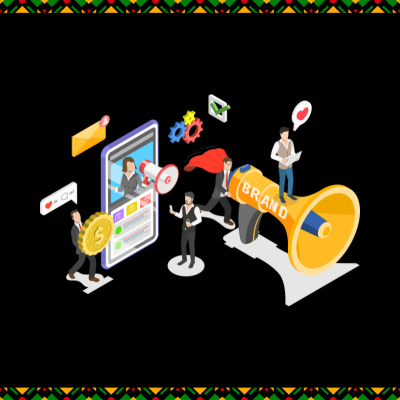
- Engage students in creating a social media campaign focused on highlighting lesser-known aspects of Black history. This project develops digital communication skills and raises awareness.
28. Environmental Justice Project
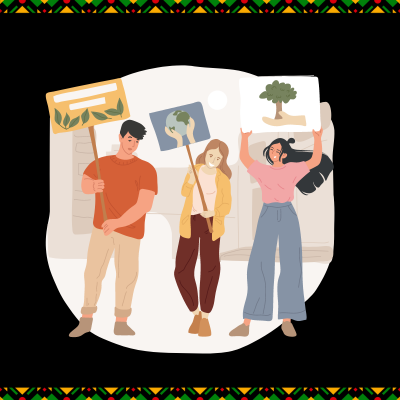
- Investigate and create a project highlighting the intersection of environmental issues and African American communities. Discuss historical injustices and current initiatives addressing environmental concerns.
29. Black History Month Collaborative Mural

- Collaborate on a mural project that combines artistic expression with historical representation. Each student can contribute a section, creating a cohesive visual narrative.
30. Interactive African Geography Game
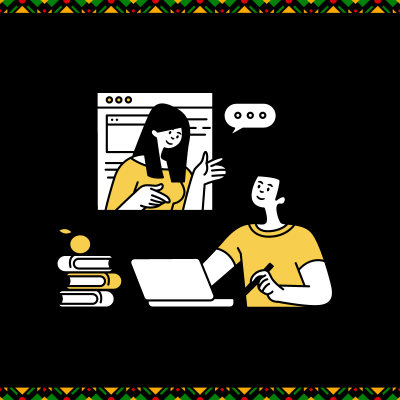
- Develop an interactive geography game that quizzes students on African countries, capitals, and landmarks. This project combines historical knowledge with geographic understanding.
Why Do We Celebrate Black History Month In February?
We celebrate Black History Month in February because the month holds special significance in African American history.
The celebration first began in 1926 when Carter G. Woodson, an African American historian known as the “Father of Black History”, launched Negro History Week. He chose the second week of February specifically because it coincided with the birthdays of two legendary figures in Black history:
The first, Abraham Lincoln, was born on February 12th. As U.S President, Lincoln issued the Emancipation Proclamation abolishing slavery. The second, Frederick Douglass, was born into slavery on February 14th before escaping and becoming a prominent leader in the abolitionist movement as an author, speaker, and advisor to presidents.
Decades later, the week-long celebration expanded when official recognition grew for its importance in schools and communities. In 1976, during the U.S. Bicentennial, President Gerald Ford officially recognized and urged Americans to honor the achievements of Black Americans every February.
10 Black History Month Activities for Your Classroom
Here’s a table presenting 10 Black History Month activities for your classroom:
| Activity | Description |
|---|---|
| 1. Timeline Creation | Students create a timeline of key events and figures in Black history, providing context and details. |
| 2. Biographical Reports | Research and present short biographical reports on influential Black figures in various fields. |
| 3. Artistic Expression | Encourage students to express Black history through art, whether paintings, drawings, or sculptures. |
| 4. Poetry and Rap Writing | Explore the power of words by writing poems or rap songs that reflect important aspects of Black history. |
| 5. Historical Role Play | Organize a role-play activity where students embody historical figures, bringing their stories to life. |
| 6. Movie Screening | Host a screening of documentaries or movies that focus on Black history, followed by discussions. |
| 7. Book Club | Form a book club to read and discuss literature by Black authors, promoting critical thinking. |
| 8. Virtual Museum Tour | Take a virtual tour of online museums dedicated to Black history, fostering exploration and discovery. |
| 9. Community Service | Engage in a community service project addressing issues relevant to social justice and equality. |
| 10. Panel Discussions | Organize panel discussions with guest speakers or students sharing insights on Black history topics. |
What Is The Purpose Of Black History Month
The purpose of Black History Month is to:
- Highlight and pay tribute to the significant historical contributions of African Americans across all aspects of society, including science, politics, law, sports, art, literature, and more.
- Celebrate and increase the visibility of iconic and lesser-known Black pioneers, innovators, creators, activists, and leaders and their extraordinary impact over generations in helping shape and advance America.
- Educate society about the central role of African Americans who fought oppression by organizing and advocating for civil liberties and equal rights for all historically marginalized groups.
- Empower the Black community through re-visiting stories of their ancestors’ strength, courage, and resilience in overcoming struggles from slavery to the civil rights movement to present-day systemic racism.
- Inspire individuals of all racial and cultural backgrounds by learning how a history marred by discrimination could produce so many meaningful discoveries, vibrant art, and achieving champions of justice.
- Facilitate open, honest, but sensitive discussions among youth and adults on confronting and reconciling remaining racial inequities and biases.
- Chart the progress made toward an inclusive, pluralistic society as well as plan sustained collaborative action around ongoing social justice and empowerment efforts.
Wrap-Up
Doing a Black History Month project helps middle school students learn more about African American culture and history in a fun way. They can make art, films, performances, recipes, and models that tell stories about Black scientists, authors, artists, activists, and pioneers. This makes learning about history and civil rights more interesting.
Students can create timelines showing important events and comic strips about historical moments. They can also build maps to show how the Underground Railroad helped people escape to freedom. These activities make history more real and alive.
When students research, check information sources, and share what they’ve learned in creative ways, they improve important school skills. Displaying their projects lets them teach others in the community. Most importantly, these projects show how much Black people have contributed to business, technology, literature, music, and politics. Often, these contributions are not well-known.
Learning about these contributions can inspire students and help them appreciate the people who worked hard for the freedoms we enjoy today. This is a first step in addressing unfairness in our society and working towards fairness for future generations.

